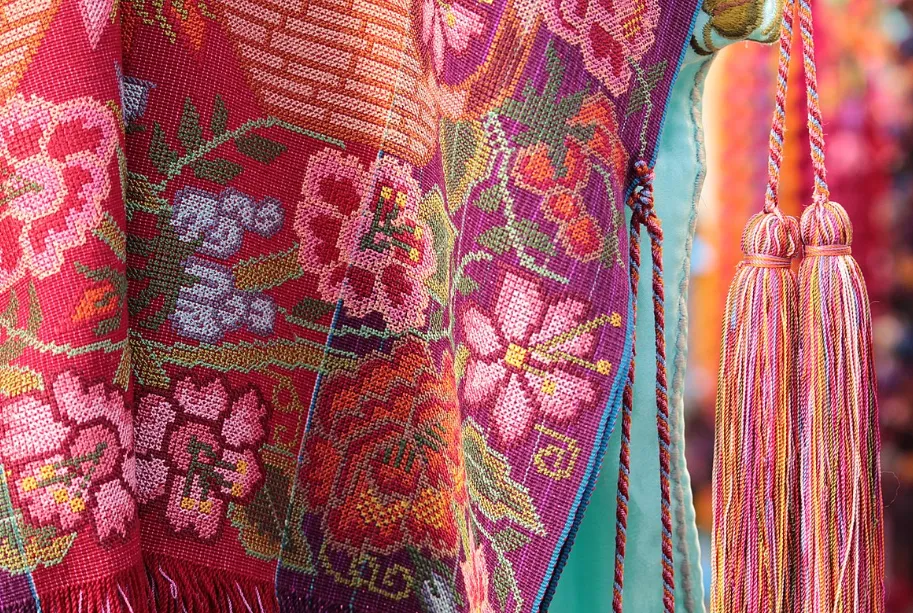Contents
Introduction to Spandex
Spandex, also known as elastane, is a synthetic fiber renowned for its exceptional elasticity. Originally developed in the late 1950s, it has since revolutionized various industries. The properties of spandex material make it an indispensable component in numerous textile applications, influencing fashion, sportswear, and even everyday clothing.
Its unique composition allows it to stretch up to five times its original length and retain its shape. This remarkable elasticity offers unparalleled comfort and mobility, making it a staple in garment production. Whether in high-performance sports leggings or everyday jeans, spandex ensures that the wearer’s movement is unrestricted, providing functionality and comfort.
The Versatility of Spandex
One of the key attributes of spandex is its versatility. The fiber is used across a broad spectrum of products, from everyday clothing to specialized athletic wear. Its capability to stretch and conform provides comfort and ease of movement, making it ideal for various garment types. According to science reports, spandex offers unique advantages in form-fitting and functional garments.
The benefits of spandex extend beyond just clothing. It is extensively used in home furnishings, medical supplies, and even industrial applications where flexibility is paramount. In-home décor introduces a stretchable quality to items like chair covers and bedding, ensuring a snug and wrinkle-free fit. In the medical field, spandex is a key component in items such as compression garments and bandages, offering both elasticity and support, which are critical for therapeutic applications.
Spandex and Sustainability
While traditionally made from petrochemicals, recent developments focus on creating more sustainable spandex. Innovations aim to reduce the environmental impact during the production process and enhance the material’s lifecycle. This shift towards eco-friendly textiles is increasingly important as sustainability becomes a major consumer concern.
Leading manufacturers are now exploring using bio-based alternatives and recycling techniques to make spandex more sustainable. These efforts are critical in addressing the environmental challenges associated with synthetic fibers. For instance, advancements in closed-loop recycling processes allow for spandex to be repurposed without significant loss of quality, extending the material’s life cycle and reducing waste. Additionally, research into bio-based spandex made from renewable resources such as corn and soybeans shows promise as an eco-friendly alternative.
Innovations in Spandex Technology
Recent innovations have positioned spandex at the forefront of textile technology. Spandex continues to evolve through advancements such as moisture-wicking, anti-microbial properties, and enhanced durability. A business report highlights how cutting-edge technologies integrate spandex with smart textiles for innovative applications.
These technological developments not only enhance spandex’s performance attributes but also extend its applications. Smart textiles integrating spandex can now monitor health vitals, adapt to environmental conditions, and enhance athletic performance through built-in sensors and responsive materials. For example, garments that can change their properties according to the wearer’s body temperature or perspiration levels are becoming a reality, thanks to the fusion of spandex with advanced textile technologies.
Impact on the Fashion Industry
The fashion industry has significantly benefited from spandex, which creates more comfortable and durable clothing. Designers leverage its elasticity to craft garments that fit various body types while maintaining style. From high fashion to everyday wear, spandex has reshaped fashion sensibilities.
The premium placed on inclusivity and adaptability in fashion today is largely supported by spandex. Its seamless integration into fabrics creates size-inclusive lines that offer style and comfort. This inclusivity is evident in the rise of brands focused on plus-size fashion, where spandex ensures a comfortable and flattering fit. Additionally, spandex is celebrated for its role in developing innovative design techniques, such as seamless knitting and body mapping, which enhance modern fashion’s aesthetic and functional aspects.
Spandex in Sports and Activewear
Spandex is indispensable in the creation of sports and activewear. Its stretchability and moisture management properties contribute to athletes’ performance and comfort. Brands rely heavily on spandex to develop products that cater to the needs of both professional athletes and fitness enthusiasts.
Advantages such as reduced friction, better breathability, and a snug fit have made spandex the material of choice in high-intensity sports and workouts. The evolution of athleisure, blending athletic and leisure wear, further showcases the essential role of spandex in meeting the demands of active lifestyles. High-performance leggings, compression wear, and even performance-enhancing gear like swimsuits and cycling suits heavily rely on spandex for their ergonomic and aerodynamic benefits, allowing athletes to maximize their efficiency and comfort.
Future of Spandex in Textiles
Looking ahead, spandex is poised to remain a dominant force in the textile industry. Its applications will likely expand with ongoing innovations and a shift towards more sustainable practices. The future promises even more sophisticated uses, blending technology and textile expertise.
As research and development push the envelope, we can expect spandex to be utilized in increasingly diverse and intelligent ways. Bio-engineered spandex, improved recyclability, and the integration of nanotechnology will ensure that this versatile material remains invaluable for years to come. Potential developments may include smart wearables that not only monitor health but also provide:
- Therapeutic benefits.
- Adaptive clothing that reacts to environmental changes to maintain optimal comfort.
- Further advancements in sustainable production methods significantly reduce the ecological footprint of spandex.
The continuous evolution of spandex technology is set to open new horizons in fashion and functionality, making it an essential fiber for the future.


